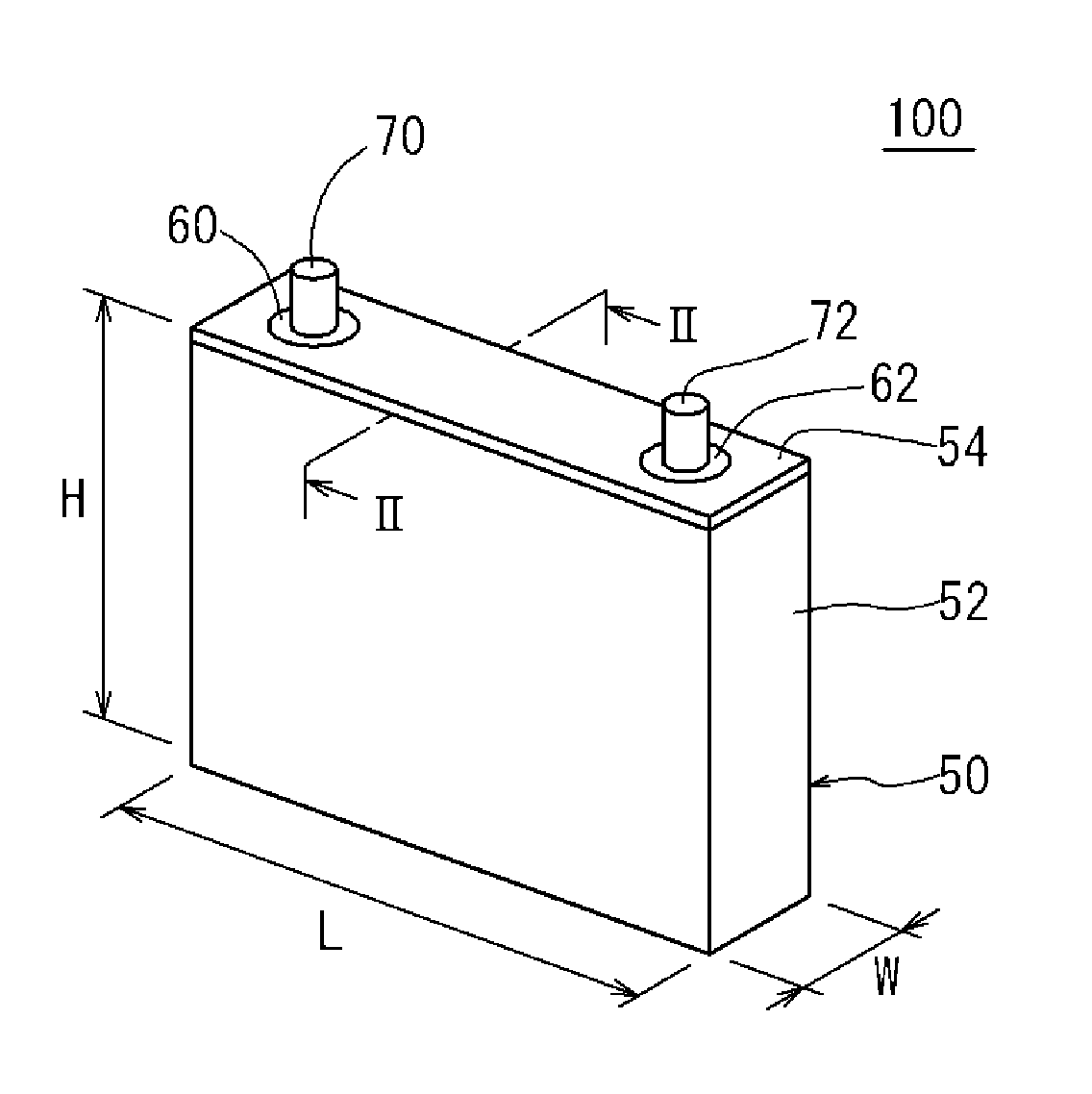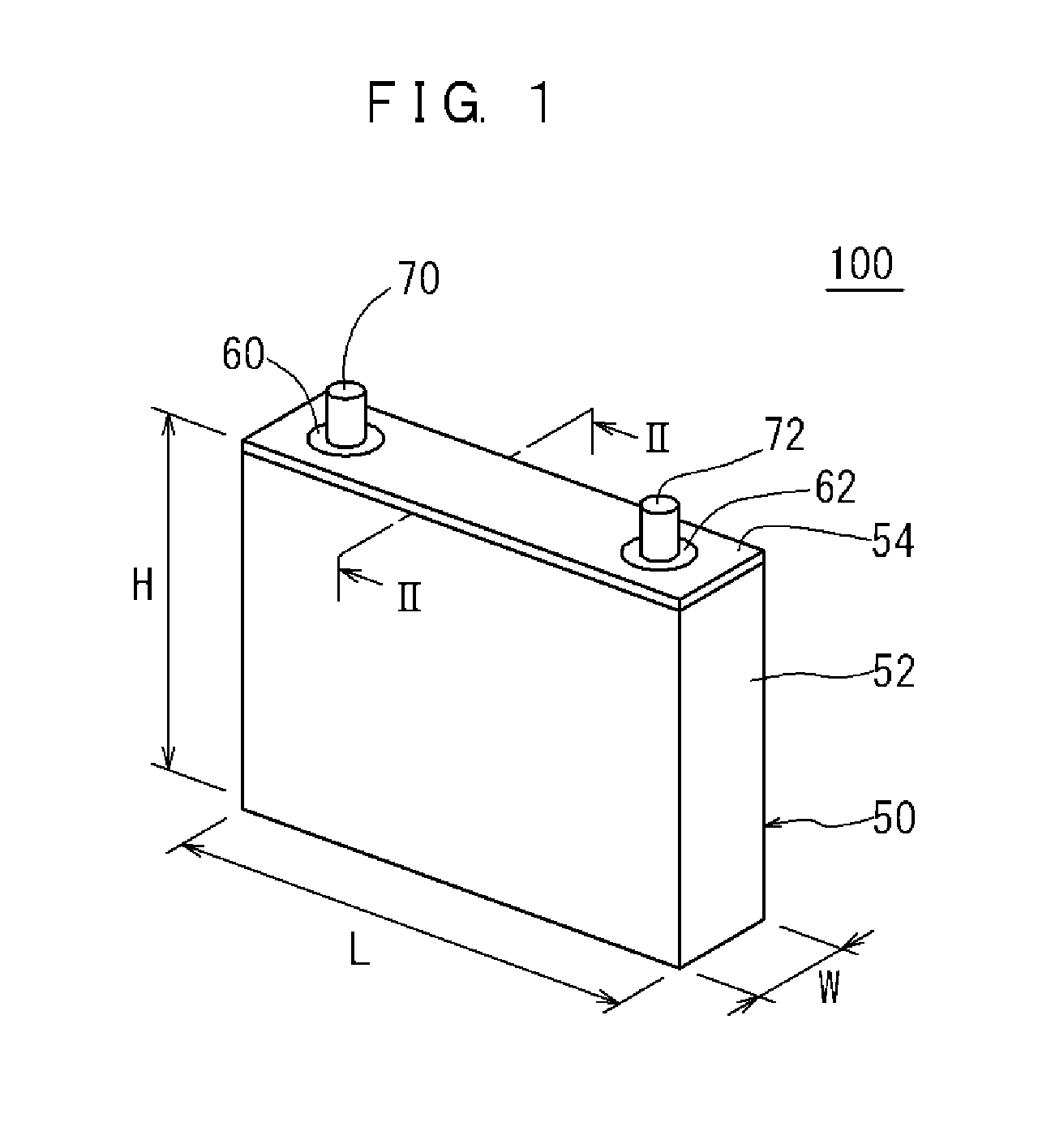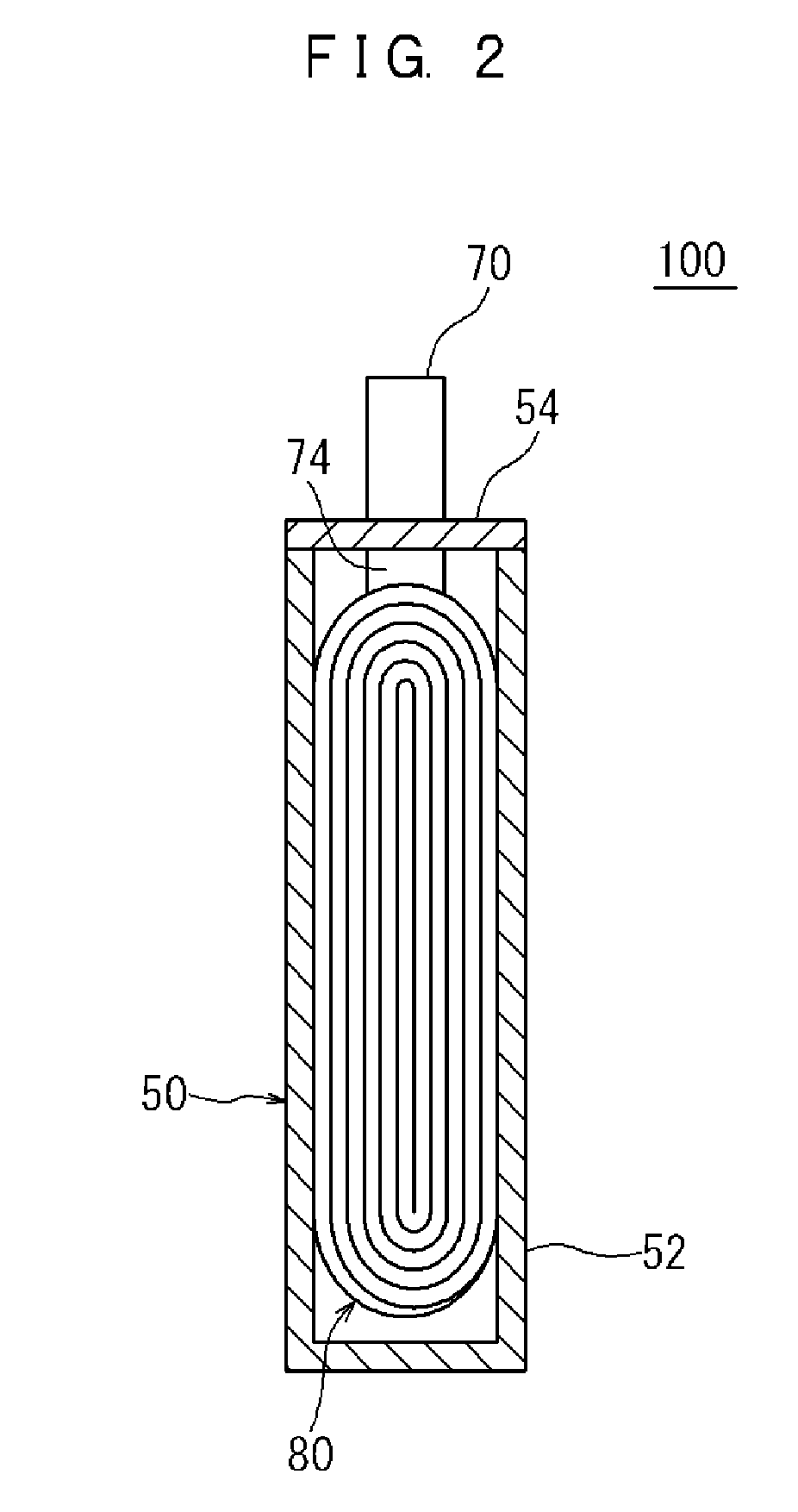Lithium secondary battery
a secondary battery and lithium technology, applied in the field of lithium secondary batteries, can solve problems such as abnormal heat generation of batteries, and achieve the effect of good battery characteristics and good output characteristics
- Summary
- Abstract
- Description
- Claims
- Application Information
AI Technical Summary
Benefits of technology
Problems solved by technology
Method used
Image
Examples
Embodiment Construction
[0028]Embodiments of the present invention are explained below with reference to accompanying drawings. In the explanation of the drawings, members and portions that elicit a same effect are denoted with identical reference numerals. The dimensional relationships (length, width, and thickness) in the figures do not reflect actual dimensional relationships. Any features other than the features specifically set forth in the present description and which may be necessary for carrying out the present invention (for instance, the configuration and manufacturing method of an electrode body that comprises a positive electrode and a negative electrode, the configuration and manufacturing method of a separator and an electrolyte, and ordinary techniques relating to the construction of lithium secondary batteries) can be regarded as design matter for a person skilled in the art on the basis of known techniques in the technical field in question.
[0029]As illustrated in FIG. 1 to FIG. 4, a lith...
PUM
| Property | Measurement | Unit |
|---|---|---|
| battery capacity | aaaaa | aaaaa |
| thickness | aaaaa | aaaaa |
| thickness | aaaaa | aaaaa |
Abstract
Description
Claims
Application Information
 Login to View More
Login to View More - R&D
- Intellectual Property
- Life Sciences
- Materials
- Tech Scout
- Unparalleled Data Quality
- Higher Quality Content
- 60% Fewer Hallucinations
Browse by: Latest US Patents, China's latest patents, Technical Efficacy Thesaurus, Application Domain, Technology Topic, Popular Technical Reports.
© 2025 PatSnap. All rights reserved.Legal|Privacy policy|Modern Slavery Act Transparency Statement|Sitemap|About US| Contact US: help@patsnap.com



